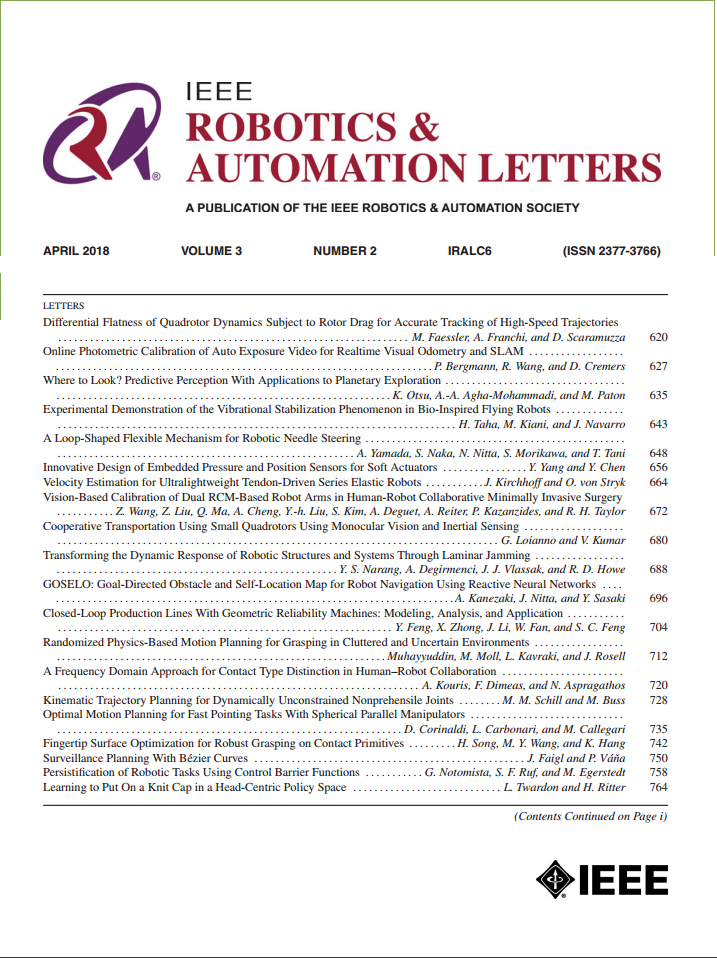Cluster-ALIV: Aerial LiDAR-Inertia-Visual Dense Reconstruction for Cluster UAV
IF 4.6
2区 计算机科学
Q2 ROBOTICS
引用次数: 0
Abstract
Uncrewed Aerial Vehicles (UAVs) equipped with LiDAR, camera, and Inertial Measurement Unit sensors are increasingly utilized for real-time dense reconstruction in large-scale rescue operations and environmental monitoring, among others. However, achieving algorithmic robustness remains challenging due to the UAVs' high-speed flight and rapid pose changes. Additionally, energy constraints on individual UAVs can be mitigated through multi-UAV collaboration, improving operational efficiency. Nevertheless, when faced with unknown environments or the loss of Global Navigation Satellite System signal, most multi-UAV dense reconstruction systems can't work, making it hard to construct a global consistent map. In this letter, we propose Cluster-ALIV, a real-time dense reconstruction system for multiple UAVs that effectively supports aerial, large-scale scenarios with lost global positioning and weak co-visibility of LiDAR or vision. The system integrates LiDAR-Inertial-Visual odometry through multi-sensor fusion to generate accurate, gravity-aligned, colorized LiDAR point clouds and visual information with scale. Overall, in the Cluster-ALIV, each UAV executes a LiDAR-Inertial-Visual odometry, transmitting point cloud and visual data to a ground server, where multi-UAV joint optimization is performed through LiDAR post-processing, visual post-processing, and normal distributions transform refinement. Extensive experiments demonstrate that our system can efficiently construct large-scale dense map in real time with high accuracy and robustness.Cluster- aliv:空中激光雷达-惯性-视觉密集重建集束无人机
配备激光雷达、摄像头和惯性测量单元传感器的无人驾驶飞行器(uav)越来越多地用于大规模救援行动和环境监测等领域的实时密集重建。然而,由于无人机的高速飞行和快速姿态变化,实现算法鲁棒性仍然具有挑战性。此外,单个无人机的能量限制可以通过多无人机协作来缓解,从而提高作战效率。然而,当面对未知环境或全球导航卫星系统信号丢失时,大多数多无人机密集重建系统无法工作,难以构建全球一致的地图。在这封信中,我们提出了Cluster-ALIV,这是一种用于多架无人机的实时密集重建系统,可有效支持失去全球定位和激光雷达或视觉共同可视性弱的空中大规模场景。该系统通过多传感器融合集成激光雷达-惯性-视觉里程计,生成精确的、重力对准的、彩色的激光雷达点云和具有尺度的视觉信息。总体而言,在Cluster-ALIV中,每架无人机执行LiDAR- inertial - visual odometry,将点云和视觉数据传输到地面服务器,在地面服务器中,通过LiDAR后处理、视觉后处理和正态分布变换细化执行多架无人机联合优化。大量实验表明,该系统能够有效地实时构建大规模密集地图,具有较高的精度和鲁棒性。
本文章由计算机程序翻译,如有差异,请以英文原文为准。
求助全文
约1分钟内获得全文
求助全文
来源期刊

IEEE Robotics and Automation Letters
Computer Science-Computer Science Applications
CiteScore
9.60
自引率
15.40%
发文量
1428
期刊介绍:
The scope of this journal is to publish peer-reviewed articles that provide a timely and concise account of innovative research ideas and application results, reporting significant theoretical findings and application case studies in areas of robotics and automation.
 求助内容:
求助内容: 应助结果提醒方式:
应助结果提醒方式:


